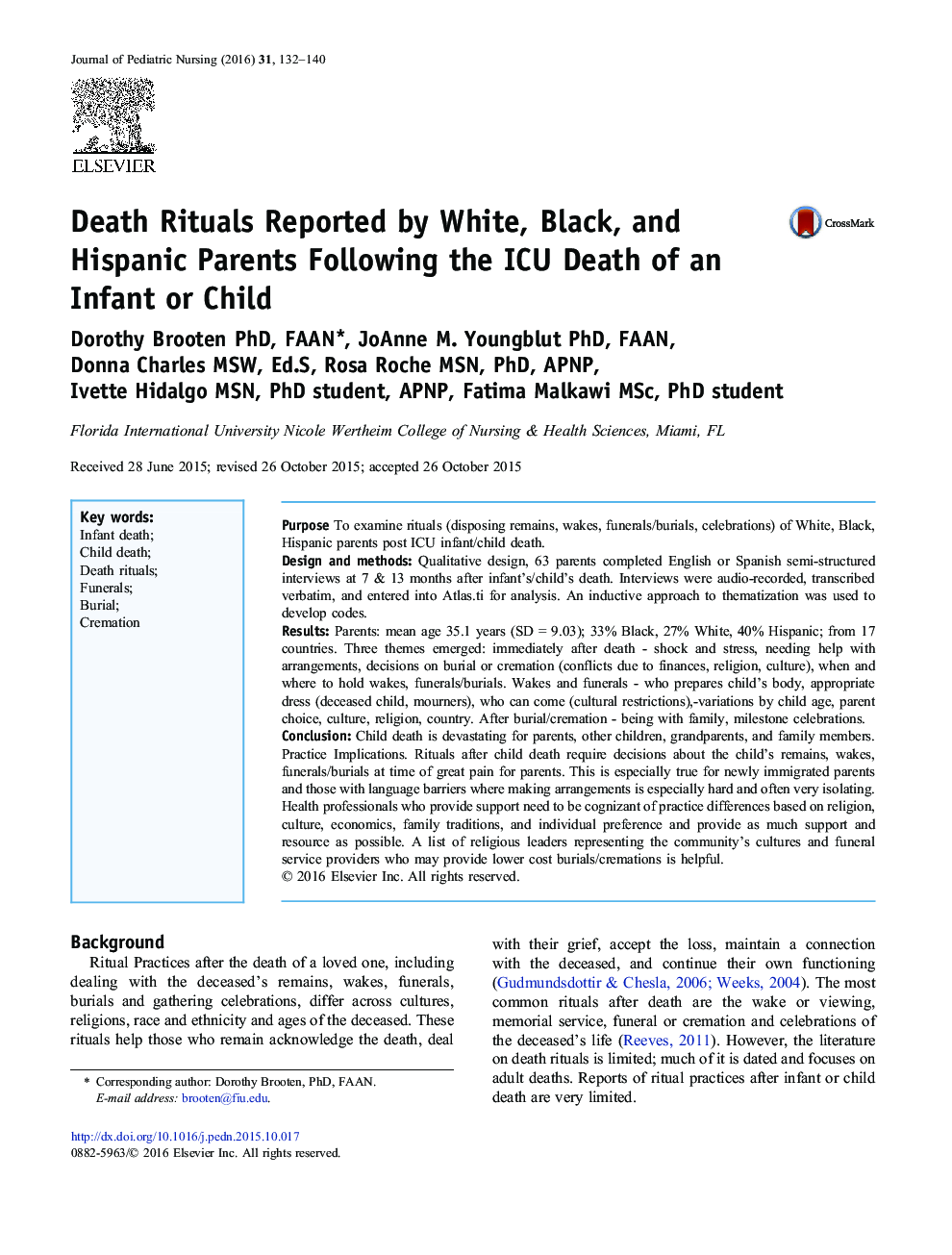| Article ID | Journal | Published Year | Pages | File Type |
|---|---|---|---|---|
| 2664098 | Journal of Pediatric Nursing | 2016 | 9 Pages |
•Rituals after child death vary by child age, parent choice, culture, religion.•Burial vs cremation stresses parents due to finances, religion, future relocation.•Child funeral services may be shorter, have fewer prayers, be less well attended.•Newly immigrated parents lack family supports, and understanding of US burial laws.•Health care providers need to be aware of differences in rituals after child death.
PurposeTo examine rituals (disposing remains, wakes, funerals/burials, celebrations) of White, Black, Hispanic parents post ICU infant/child death.Design and methodsQualitative design, 63 parents completed English or Spanish semi-structured interviews at 7 & 13 months after infant's/child's death. Interviews were audio-recorded, transcribed verbatim, and entered into Atlas.ti for analysis. An inductive approach to thematization was used to develop codes.ResultsParents: mean age 35.1 years (SD = 9.03); 33% Black, 27% White, 40% Hispanic; from 17 countries. Three themes emerged: immediately after death - shock and stress, needing help with arrangements, decisions on burial or cremation (conflicts due to finances, religion, culture), when and where to hold wakes, funerals/burials. Wakes and funerals - who prepares child's body, appropriate dress (deceased child, mourners), who can come (cultural restrictions),-variations by child age, parent choice, culture, religion, country. After burial/cremation - being with family, milestone celebrations.ConclusionChild death is devastating for parents, other children, grandparents, and family members. Practice Implications. Rituals after child death require decisions about the child's remains, wakes, funerals/burials at time of great pain for parents. This is especially true for newly immigrated parents and those with language barriers where making arrangements is especially hard and often very isolating. Health professionals who provide support need to be cognizant of practice differences based on religion, culture, economics, family traditions, and individual preference and provide as much support and resource as possible. A list of religious leaders representing the community's cultures and funeral service providers who may provide lower cost burials/cremations is helpful.
